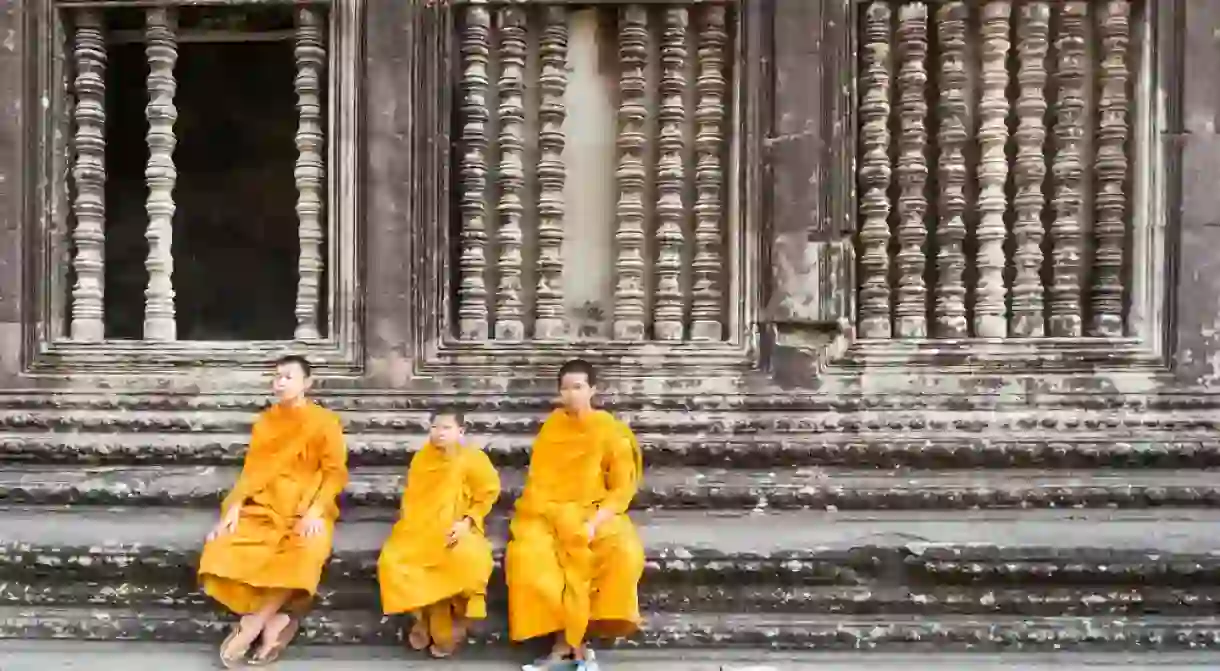What Angkor Wat's Architecture Represents in Hinduism

As the world’s largest religious monument, Angkor Wat is a stunning architectural and engineering feat from the 12th century. Serving as the capital of the mighty Angkor Empire that ruled over large swathes of the region during its peak, the ancient city excites both architects and historians, offering a unique insight into life during this time. It is also a symbol of the country’s shift in religion from Hinduism to Buddhism. We look at Angkor Wat’s Hindu references.
Iconic Angkor Wat was originally built as a Hindu temple of god Vishnu to see over the Khmer Empire that ruled during that time. Built by King Suryavarman II, it served as his state temple and eventual mausoleum and, breaking from the Shaiva tradition of his predecessors, he dedicated it to Vishnu.
Vishnu is one of the three principle gods in Hinduism, along with Shiva and Brahma. Vishnu is known as the protector, and as King Suryavarman’s name translating as “protector of the sun”, dedicating the temple to his namesake seems fitting.
Background
The Angkor Archaeological Park is full of temples, structures and monuments, of which the most impressive were created by kings. Why? Doing so was not only a way for a king to prove himself more powerful than his predecessors but also a way to compete for the protection of the gods.
So, with Hindu temples serving as a home of god rather than a place for religious congregation, it was a king’s prerogative to create the grandest and most opulent temple or palace for the gods.

Determined to offer the finest home ever created, work began on Angkor Wat in 1116, three years after King Suryavarman II came to the throne. An estimated 300,000 workers helped construct the architectural feat, which was never completely finished. Work ended in 1150, shortly after the king’s death.
The design reflects Hindu beliefs, as it was built to represent Mount Meru, the mythical home of Hindu gods. However, Angkor Wat defies the norm, and unlike other Angkorian temples, faces west. Whatever the reason, it affords the great sunrises that tourists gather en masse to watch today.
Bas Relief Carvings
The craft of carving was alive and kicking during the Angkor Empire, with evidence of the art on the 1,200sqm of carved bas reliefs that adorn the temple.
Telling eight Hindu stories, the most famous is the Churning of the Ocean of Milk. This tells the tale of the start of time and the creation of the universe, and how good prevails over evil.

The detailed carvings seen at Angkor depict various scenes, such as the gods and demons playing tug-of-war with the Naga (serpent king) and the result of the churning – enchanting celestial maidens, or apsaras, who adorn many of the bas reliefs throughout the temple.
Temple Mountain
Angkor is made up of a protective moat that surrounds the complex, an expansive enclosure wall and the temple itself, comprised of three galleries and a central sanctuary, with five stone towers.

These towers represent Mount Meru’s five mountain ranges, with Angkor’s galleries sweeping empty spaces between them and a moat intended to mimic the mountain’s landscape and surrounding ocean.
Despite being built as a Hindu temple, towards the end of the 12th century the country switched to Buddhism, and the religion practiced at Angkor Wat followed suit.
Buddhism is still practiced here today, which should be remembered when visiting. It’s worth taking note of a few rules, such as keeping shoulders and knees covered and remaining respectful during your visit.














